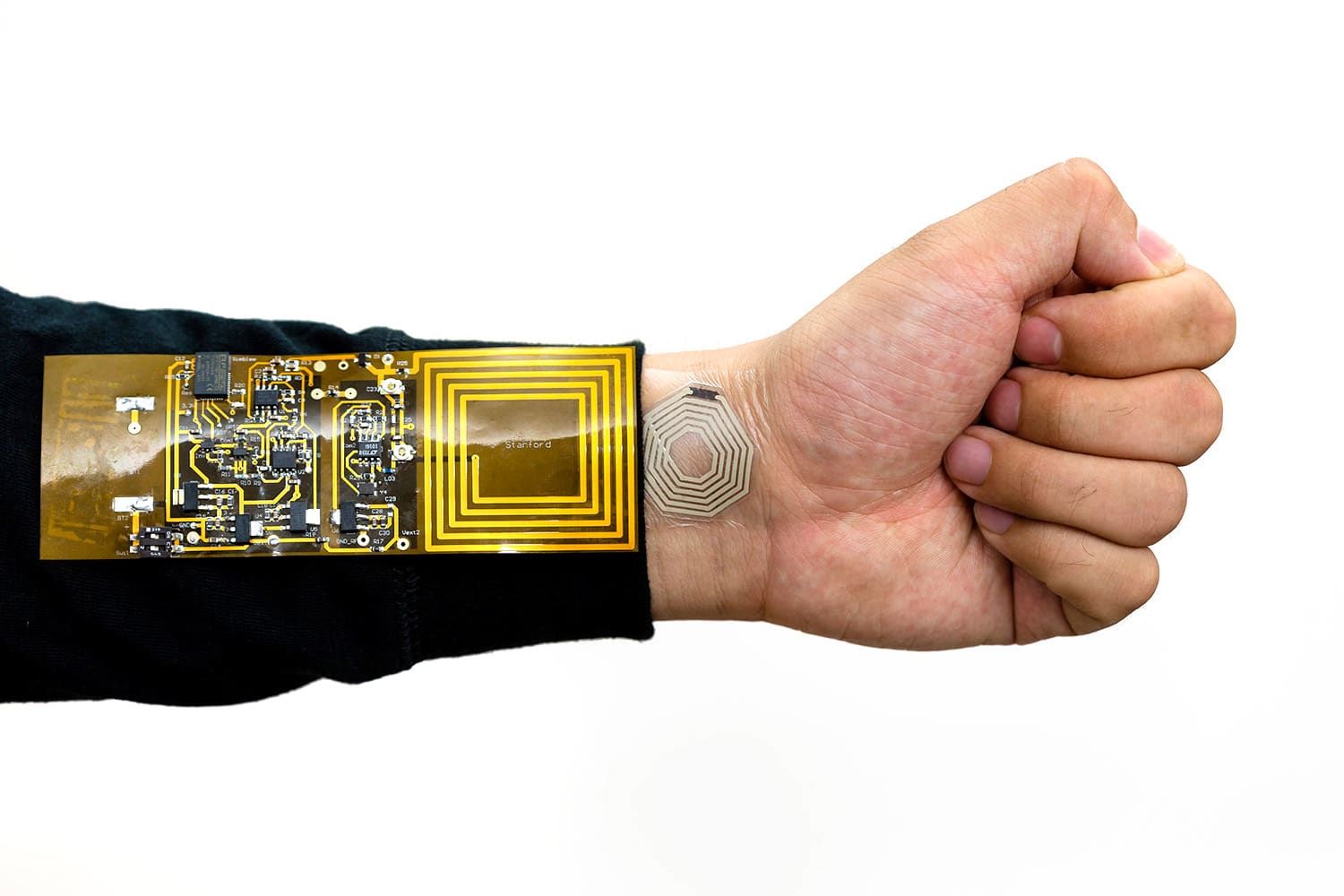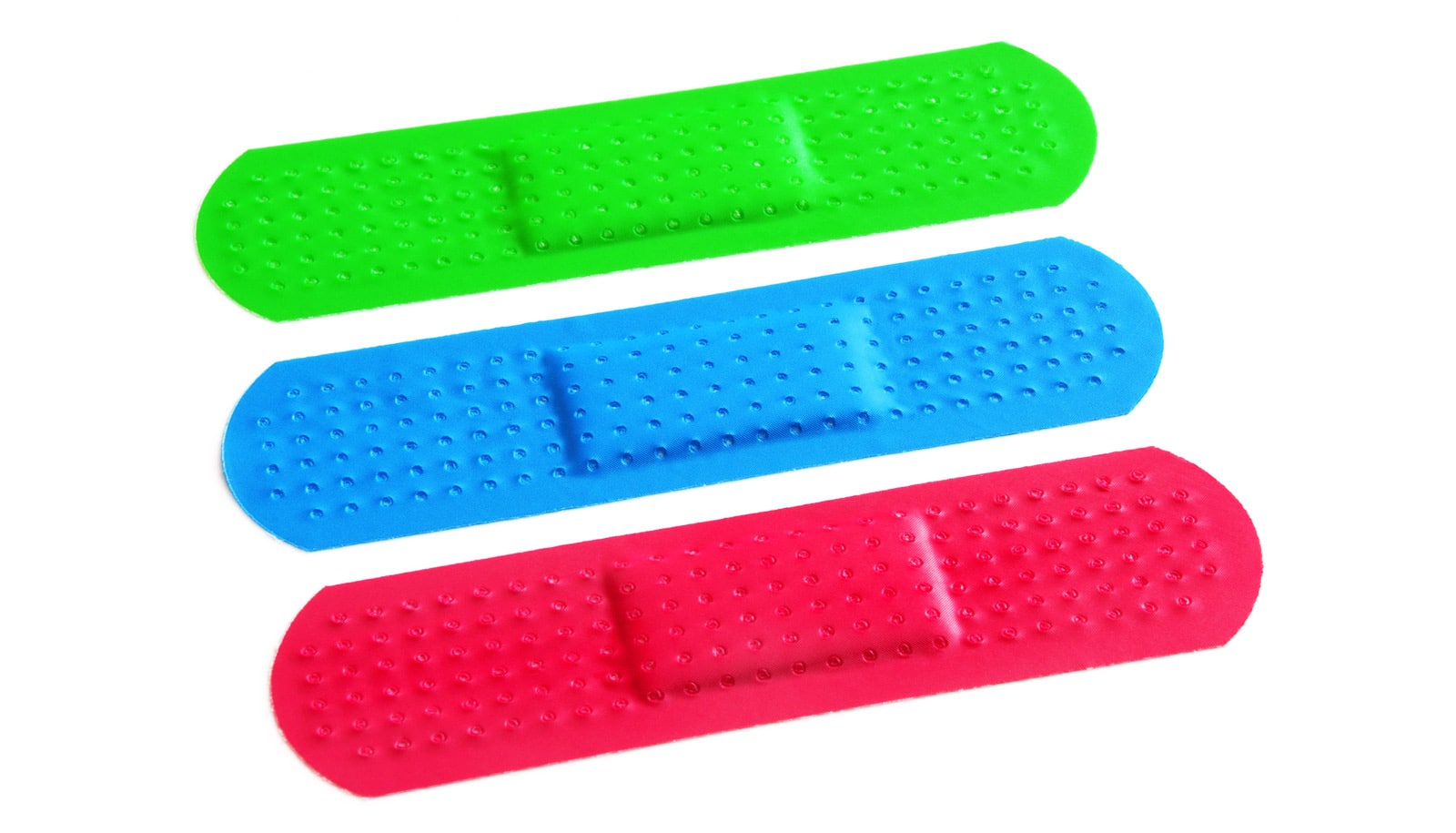A sensor that sticks to skin can pick up subtle physiological signals like a flush of embarrassment or a fluttering heart and wirelessly send health readings to a receiver clipped to your clothes.
To demonstrate the wearable technology, researchers stuck sensors to the wrist and abdomen of one test subject to monitor their pulse and respiration by detecting how the skin stretched and contracted with each heartbeat or breath.
Likewise, stickers on the person’s elbows and knees gauged the minute tightening or relaxation of the skin each time the corresponding muscle flexed to track arm and leg motions.
Researchers will probably first use the wearable technology in medical settings to monitor patients with sleep disorders or heart conditions, says Zhenan Bao, professor of chemical engineering at Stanford University.
Bao’s lab is already trying to develop new stickers to sense sweat and other secretions to track variables such as body temperature and stress. Her ultimate goal is to create an array of wireless sensors that stick to the skin and work in conjunction with smart clothing to more accurately track a wider variety of health indicators than the smart phones or watches consumers use today.
“We think one day it will be possible to create a full-body skin-sensor array to collect physiological data without interfering with a person’s normal behavior,” says Bao, who is also a professor in the School of Engineering.
Postdoctoral scholars Simiao Niu and Naoji Matsuhisa led the team that spent three years designing the sensors. Their goal was to develop a technology comfortable to wear with no batteries or rigid circuits to prevent the stickers from stretching and contracting with the skin.
The eventual design met these parameters with a variation of the RFID—radiofrequency identification—technology used to control keyless entry to locked rooms. When a person holds an ID card up to an RFID receiver, an antenna in the ID card harvests a tiny bit of RFID energy from the receiver and uses it to generate a code that it then beams back to the receiver.
The BodyNet sticker is similar to the ID card: It has an antenna that harvests a bit of the incoming RFID energy from a receiver on the clothing to power its sensors and then takes readings from the skin and beams them back to the nearby receiver.
But to make the wireless sticker work, the researchers had to create an antenna that could stretch and bend like skin. To do this, they screen-printed metallic ink on a rubber sticker. However, whenever the antenna bent or stretched, those movements made the signal too weak and unstable to be useful.
To get around this problem, the researchers developed a new type of RFID system that could beam strong and accurate signals to the receiver despite constant fluctuations. The battery-powered receiver then uses Bluetooth to periodically upload data from the stickers to a smartphone, computer, or other permanent storage system.
The initial version of the stickers relied on tiny motion sensors to take respiration and pulse readings. The researchers are now studying how to integrate sweat, temperature, and other sensors into their antenna systems.
To move the technology beyond clinical applications and into consumer-friendly devices, the researchers need to overcome another challenge: keeping the sensor and receiver close to each other.
In their experiments, they clipped a receiver on clothing just above each sensor. One-to-one pairings of sensors and receivers would work in medical monitoring, but to create a BodyNet that someone could wear while exercising, antennas would need to be woven into clothing to receive and transmit signals no matter where a person sticks a sensor.
The paper appears in Nature Electronics. Additional coauthors are from Stanford and from Singapore’s Nanyang Technological University. Support for the work came from Samsung Electronics; the Singapore Agency for Science, Technology and Research; the Japan Society for the Promotion of Science; and the Stanford Precision Health and Integrated Diagnosis Center.
Source: Stanford University



